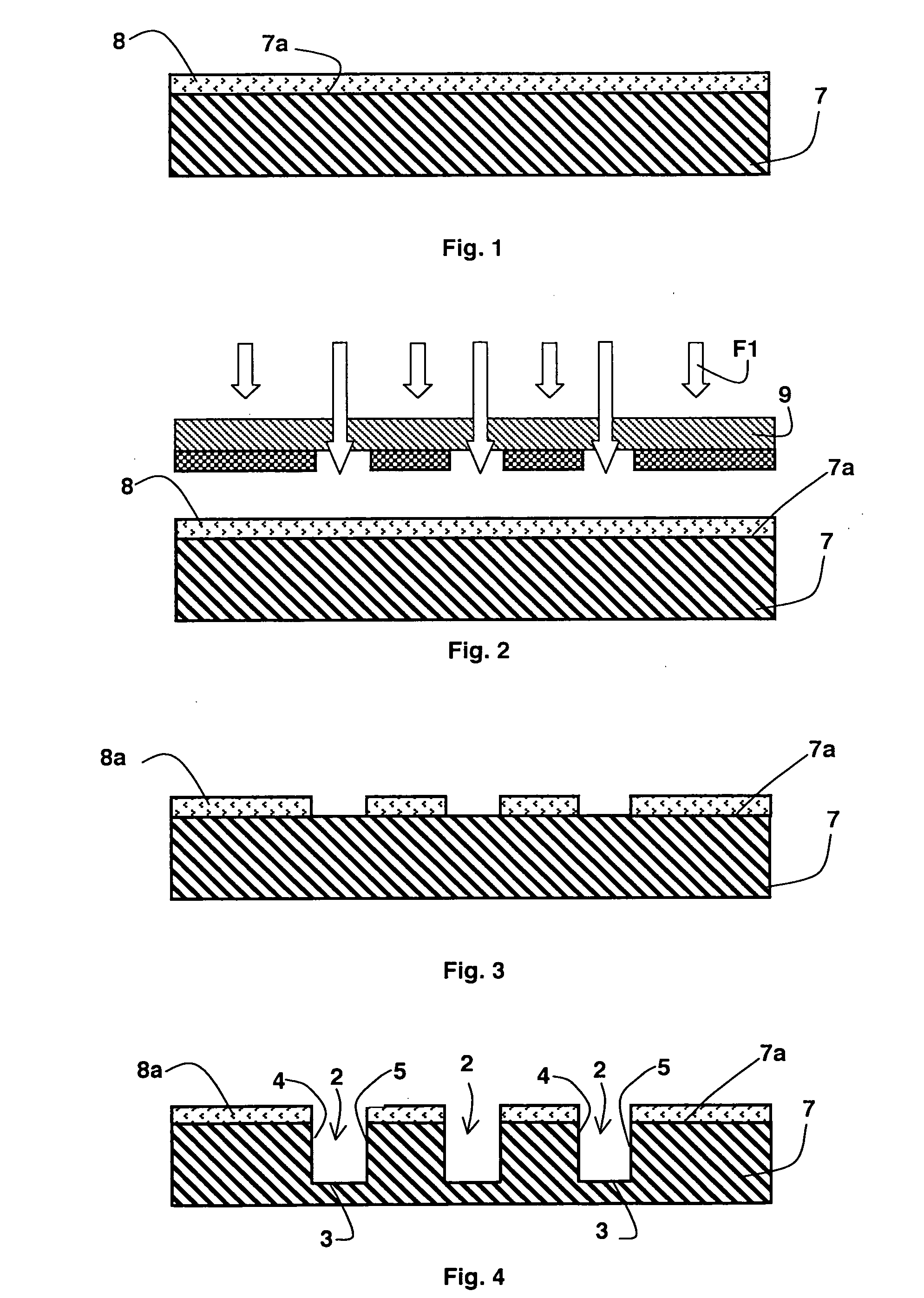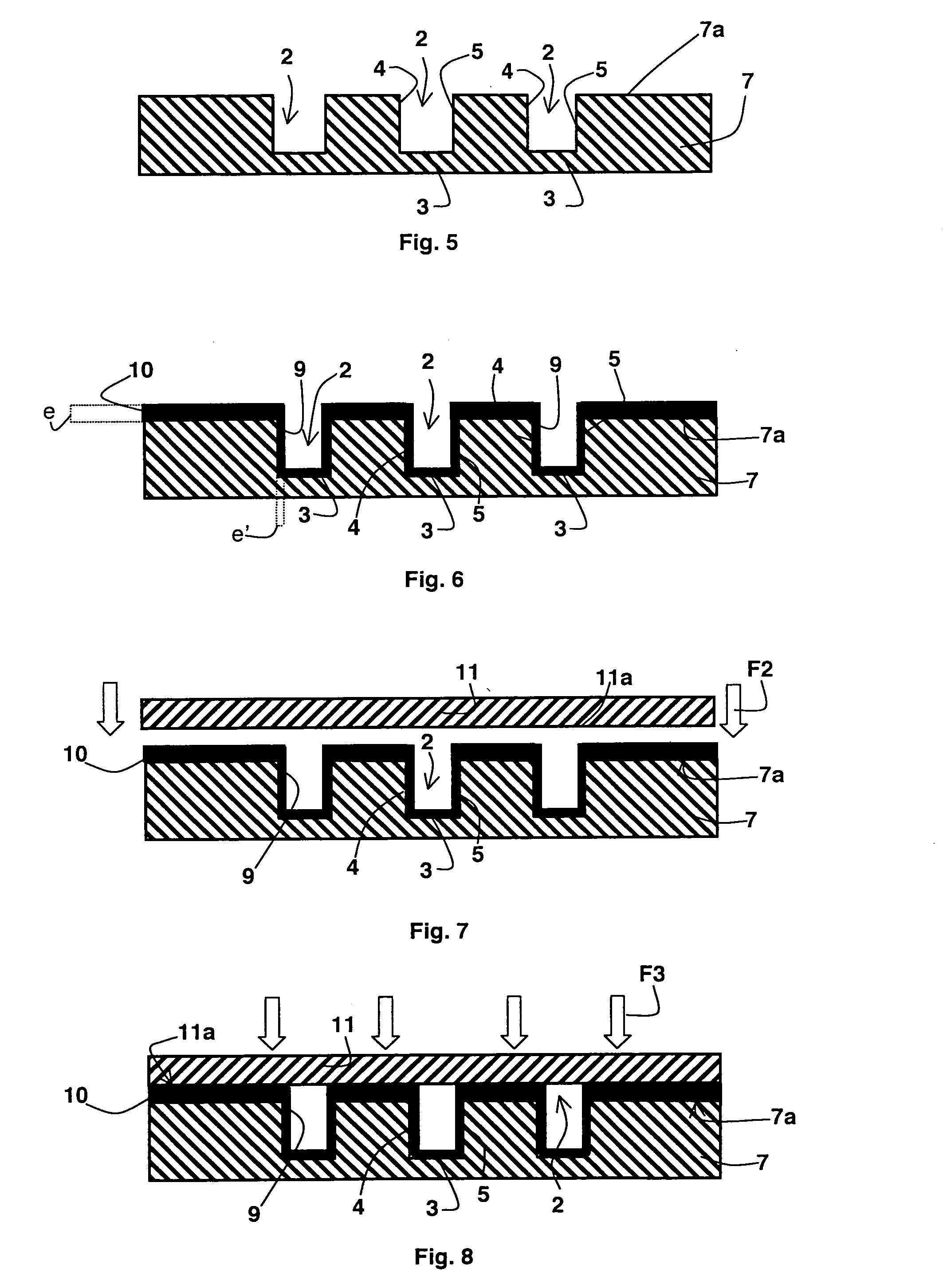Method for fabricating a microfluidic component comprising at least one microchannel filled with nanostructures
a microfluidic component and nanostructure technology, applied in microstructural technology, chemical vapor deposition coating, lamination, etc., can solve the problems of nanotubes not being able to withstand the prior cleaning steps necessary, difficult operation to perform on microscopic scale, and contaminating the environment of microcomponents. , to achieve the effect of avoiding contaminating the environment of the microcomponent, easy and inexpensiv
- Summary
- Abstract
- Description
- Claims
- Application Information
AI Technical Summary
Benefits of technology
Problems solved by technology
Method used
Image
Examples
Embodiment Construction
[0027]A microfluidic component, also called fluidic microsystem, comprises at least one closed microchannel enabling a fluid to flow therein. Said microchannel is delineated by bottom and top walls and two opposite side walls and is filled with nanostructures, such as nanotubes and in particular carbon nanotubes.
[0028]The component is achieved by previously forming the bottom wall and the opposite two side walls of said microchannel in a surface of a substrate, for example made of silicon, silicon oxide or glass. Formation of the top wall of said microchannel is performed by fitting a cover comprising for example a material chosen from silicon, silicon oxide and glass, on said surface of the substrate and sealing the cover on said surface. Then the nanostructures filling the microchannel are formed by in situ growth from a layer of metallic catalyst deposited on the opposite side walls and on the bottom wall of said microchannel.
[0029]In this way, unlike fabrication methods describe...
PUM
| Property | Measurement | Unit |
|---|---|---|
| thickness | aaaaa | aaaaa |
| thickness | aaaaa | aaaaa |
| thickness | aaaaa | aaaaa |
Abstract
Description
Claims
Application Information
 Login to View More
Login to View More - R&D
- Intellectual Property
- Life Sciences
- Materials
- Tech Scout
- Unparalleled Data Quality
- Higher Quality Content
- 60% Fewer Hallucinations
Browse by: Latest US Patents, China's latest patents, Technical Efficacy Thesaurus, Application Domain, Technology Topic, Popular Technical Reports.
© 2025 PatSnap. All rights reserved.Legal|Privacy policy|Modern Slavery Act Transparency Statement|Sitemap|About US| Contact US: help@patsnap.com



